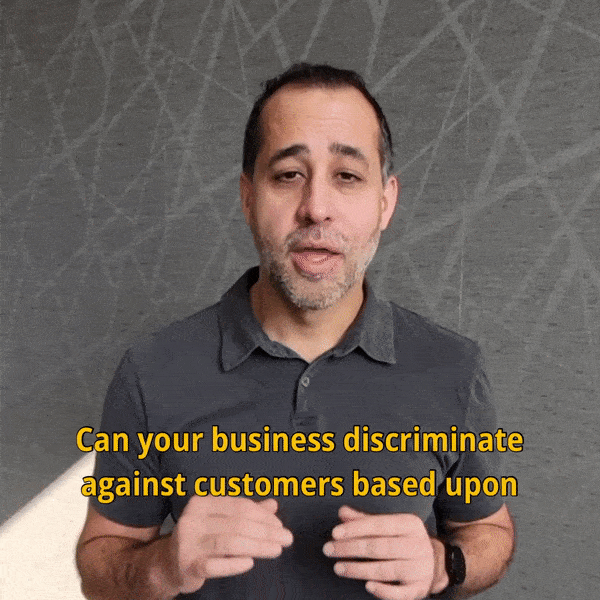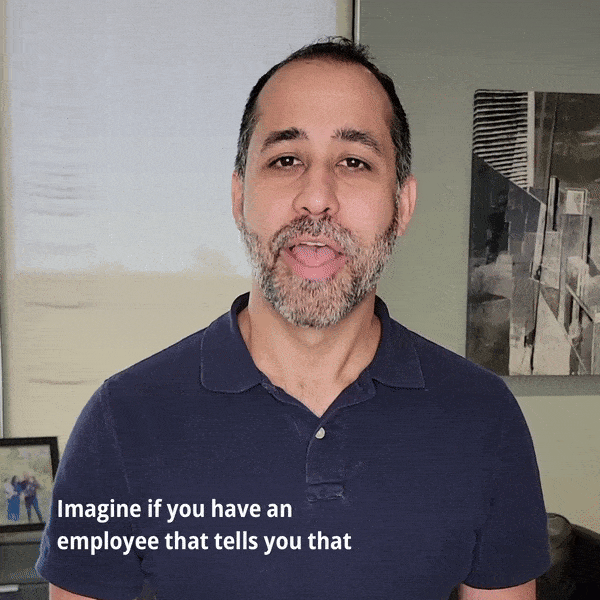The World Series starts today, and since the Royals haven’t won one since (or before) 1985 and the Mets haven’t won one since 1986, we can say for sure that we are going to see something very rare this year. However, something else has been going on in the baseball world that is much more common: the annual laying off of managers.
The World Series of Terminations
Nothing in life is certain except for death, taxes, and that several MLB teams end up looking for a new leader to captain their helm. This season already, five teams have sent their managers packing for underperformance:
- the Nationals;
- the Mariners;
- the Padres;
- the Marlins; and
- Most recently, the Dodgers.
And when there are only 30 teams total, plus more with a leader still rumored to be on the chopping block, that’s saying a lot.
Just like your favorite baseball teams, when an employee is not meeting expectations, you might tend to want to let them go. However, before you do, make sure you are following all applicable laws and that you can prove you followed them too.
Here are some tips to do this:
- Document. If an employee consistently shows up late, make sure that you have written proof of any discipline doled out because of this and dates and times the late arrivals occurred.
- Document correctly. There is a difference between documenting that someone is “underperforming” and stating the specifics (i.e., failed to deliver stated metrics three quarters in a row). So use concrete terms. A more relevant example to this post would be documenting underwhelming records, such as the Marlins 71-91 record this season.
- Be consistent. A good policy is only as compliant as its enforcement. If you terminate some employees for things, but not others, you might be setting yourself up for heartache.
Take a look at the stories behind the five manager-less teams, and see what valuable lessons you can pick up from them:
The Padres: Employment Is ‘At-Will’
While five teams were listed above as having fired managers this season, in reality, six managers were fired. That’s because the Padres got rid of both their manager and their interim manager this year – both because of an underwhelming team record. First went Bud Black and then Pat Murphy.
When you want to make a staff change, the good news is that unless you are in Montana, you know the laws in your state follow the employment at-will doctrine, where you can fire anyone for bad cause – or no cause at all.
However, just because at-will employment exists, does not mean you can literally fire anyone for any reason and in any way. As with everything in business, there are rules to how you must proceed.
While we’ll get into some of the other laws at play in other sections, right now, we are going to talk about how to ensure you keep an employment at-will relationship at all.
Even when you work outside of Montana, it is possible for you to lose your at-will status. An employment contract would override this doctrine, and it could force you to keep an employee for longer than you preferred.
In order to avoid this, make sure that the only contracts you enter into are intentional.
- Watch the wording in any document, such an employee handbook, that you create.
- Be careful what the company, managers, and supervisors are saying to employees or potential employees.
- State up front that the relationship is going to be at-will.
The Nationals: What to Do in Mass Layoffs
After an embarrassing collapse of what was supposed to be a great year, the Nationals were not content to just get rid of Manager Matt Williams. Instead, they fired the entire coaching staff. That’s eight people in total.
When your business is struggling, it is tempting, or even necessary in the event you are shutting down for good, to just get rid of everyone and shut down or start over. However, before you do that, you might have some legal considerations that must be taken.
For example, WARN and mini-WARN laws.
WARN Act – the Worker Adjustment and Retraining Notification Act.
Under federal law, this requires most employers with 100 or more employees to provide at least 60 calendar days of warning before a mass layoff, which is defined as any layoff affecting more than 50 people within a 30-day period, or plant closing in order to give the employees time to look for another position.
In addition to federal law, over 15 states have their own, mini-WARN, laws that require businesses within that state to comply with various provisions regarding the amount of workers employed and the amount of notice that must be given.
For example:
- California: Industrial or commercial facility employers with more than 75 employees must give 60 days’ notice before it closes down or before it relocates at least 100 miles away, as well as any mass layoff affecting more than 50 employees.
- New York: Employers with at least 50 employees in New York must give notice of at least 90 calendar days if at least 250 employees or 25 employees, when that number makes up at least 33 percent of the workforce, are affected by a mass layoff or if at least 25 employees are affected by a permanent plant closing.
Those descriptions are simplified versions of complex laws, but it should give you a picture: before you fire a large group of employees, you need to make sure you follow any required notice laws first.
The Mariners: Know All Discrimination Laws
Before he was fired, Lloyd McClendon was the only African-American manager in the MLB. And one of the men, former Red Sox’s captain, Jason Varitek, interviewing to be his replacement is over a decade younger.
While in this case there has not been, as far as I have heard, any foul-play (and believe it or not, pun was not intended there), situations like this do remind us of the need to be extra careful when we let employee’s go because there are a lot of discrimination laws at the federal, state, and even municipal level telling us that we cannot fire people based off of certain classifications.
Take a look at just a few of the federal laws that might affect who you can let go for certain reasons:
- The Americans with Disability Act;
- The Age Discrimination in Employment Act;
- Title VII; and the
- Pregnancy Discrimination Act.
You probably know the basic qualifications that are protected from discrimination already:
- Age;
- Disability;
- Gender;
- Religion;
- Color;
- Race; and
- National origin.
However, many states and cities add on to those laws with classifications such as sexual orientation and general public policy concerns.
While just because someone has one of these classifications does not mean you cannot fire them under any circumstance, it does make it important that when you do fire them, you can prove you did so for a valid reason.
The Dodgers: The Right Last Steps
If you had to pick the most amicable break-up of the teams on this list, then you’d probably go with Don Mattingly and the Dodgers. According to most sources, this wasn’t even a firing situation – it was actually a mutual decision.
And that is understandable. After all, by all accounts, the whole thing was handled the right way. The relationship even ended in a playoff run, unlike the other teams on this list. However, both Mattingly and the Dodgers wanted the season to end with a World Series championship – not by losing a playoff series to the New York Mets.
Still, though, that is more than a lot of teams get so it makes sense that he and the Dodgers would handle this pretty smoothly.
Here is a run-down of their process:
- They met in person.
- They had some time to think.
- They talked a few more times.
- They carefully crafted the words used in the press release.
Now you don’t have to handle a termination in just such a manner, obviously. However, it does pay to handle the process nicely. The easier the termination process, and the more carefully it is handled, the less likely you are to end up with an employee who feels wronged or wants revenge.
Outside of the process you use to end a relationship, also take into account other last steps such as
- Final paychecks;
- Return of company property; and
- Health insurance.
The Marlins: The Procedure for Recommendations
When Dan Jenning’s was told he would no longer be the Marlins’ manager, he did not have to worry about looking for other work. That is because he was asked to resume his role as the Marlins’ general manager. However, most people are not this lucky.
When you terminate an employment relationship with someone, they will most likely need to find a new position somewhere else, and to do so, they may need to use a recommendation, and as their former employer, it might be natural for them to use you as their contact.
While it is 100 percent legal to give an honest review of a former employee, even if that review is less than flattering, if it is found that a statement was false or misleading, it can lead to legal repercussions under defamation laws. Therefore, it is highly imperative that all information given is fully factual.
If there is a chance that employee’s will ask you to recommend them to another employer, you probably want to have a procedure in place to do so – or to refuse to do so.
Many companies will not give recommendations or will keep recommendations limited to admitting that someone worked at the company and stating how long. This is because they want to avoid any trouble in the future from the former employee.
However you decide to handle recommendations, publish that decision in the employee handbook or on the company website. Then, train HR and supervisors on how to handle this issue.
Avoid Close Calls – Instant Replay Isn’t Always in Your Favor
Remember to always keep your termination process squarely within the confines of the law. Because even if you had a valid reason to fire someone, if you cannot prove it, you could get in trouble before a judge or jury. If you get called out for your firing procedures, then you are the one on defense. So make sure your defense is clear because as any good baseball fan will tell you, ties often go to the runner.


![Return to the Office vs. Remote: What Can Employers Legally Enforce? [e321]](https://www.pashalaw.com/wp-content/uploads/2023/01/Pasha_LSSB_321_banner-1024x723.jpg)





![Can You Get Fired For Being Racist? [e215]](https://www.pashalaw.com/wp-content/uploads/2020/06/Untitled-design-4-1-1024x1024.png)




![Law in the Digital Age: Exploring the Legal Intricacies of Artificial Intelligence [e323]](https://www.pashalaw.com/wp-content/uploads/2023/11/WhatsApp-Image-2023-11-21-at-13.24.49_4a326c9e-300x212.jpg)
![Unraveling the Workforce: Navigating the Aftermath of Mass Layoffs [e322]](https://www.pashalaw.com/wp-content/uploads/2023/07/Untitled-design-23-300x212.png)
![Return to the Office vs. Remote: What Can Employers Legally Enforce? [e321]](https://www.pashalaw.com/wp-content/uploads/2023/01/Pasha_LSSB_321_banner-300x212.jpg)
![Explaining the Hans Niemann Chess Lawsuit v. Magnus Carlsen [e320]](https://www.pashalaw.com/wp-content/uploads/2022/10/LAWYER-EXPLAINS-7-300x169.png)
![California v. Texas: Which is Better for Business? [313]](https://www.pashalaw.com/wp-content/uploads/2021/07/Pasha_LSSB_CaliforniaVSTexas-300x212.jpg)
![Buyers vs. Sellers: Negotiating Mergers & Acquisitions [e319]](https://www.pashalaw.com/wp-content/uploads/2022/06/Pasha_LSSB_BuyersVsSellers_banner-300x212.jpg)
![Employers vs. Employees: When Are Employment Restrictions Fair? [e318]](https://www.pashalaw.com/wp-content/uploads/2022/05/Pasha_LSSB_EmployeesVsEmployers_banner-1-300x212.jpg)
![Vaccine Mandates Supreme Court Rulings [E317]](https://www.pashalaw.com/wp-content/uploads/2022/02/WhatsApp-Image-2022-02-11-at-4.10.32-PM-300x212.jpeg)
![Business of Healthcare [e316]](https://www.pashalaw.com/wp-content/uploads/2021/11/Pasha_LSSB_BusinessofHealthcare_banner-300x212.jpg)
![Social Media and the Law [e315]](https://www.pashalaw.com/wp-content/uploads/2021/10/WhatsApp-Image-2021-10-06-at-1.43.08-PM-300x212.jpeg)
![Defining NDA Boundaries: When does it go too far? [e314]](https://www.pashalaw.com/wp-content/uploads/2021/09/Pasha_LSSB_NDA_WordPress-2-300x212.jpg)
![More Than a Mistake: Business Blunders to Avoid [312] Top Five Business Blunders](https://www.pashalaw.com/wp-content/uploads/2021/06/Pasha_LSSB_Blunders_WP-1-300x212.jpg)
![Is There a Right Way to Fire an Employee? We Ask the Experts [311]](https://www.pashalaw.com/wp-content/uploads/2021/02/Pasha_LSSB_FireAnEmployee_Website-300x200.jpg)
![The New Frontier: Navigating Business Law During a Pandemic [310]](https://www.pashalaw.com/wp-content/uploads/2020/12/Pasha_LSSB_Epidsode308_Covid_Web-1-300x200.jpg)
![Wrap Up | Behind the Buy [8/8] [309]](https://www.pashalaw.com/wp-content/uploads/2020/11/Pasha_BehindTheBuy_Episode8-300x200.jpg)
![Is it all over? | Behind the Buy [7/8] [308]](https://www.pashalaw.com/wp-content/uploads/2020/09/iStock-1153248856-overlay-scaled-300x200.jpg)
![Fight for Your [Trademark] Rights | Behind the Buy [6/8] [307]](https://www.pashalaw.com/wp-content/uploads/2020/07/Fight-for-your-trademark-right-300x200.jpg)
![They Let It Slip | Behind the Buy [5/8] [306]](https://www.pashalaw.com/wp-content/uploads/2020/06/Behind-the-buy-they-let-it-slip-300x200.jpg)
![Mo’ Investigation Mo’ Problems | Behind the Buy [4/8] [305]](https://www.pashalaw.com/wp-content/uploads/2020/05/interrobang-1-scaled-300x200.jpg)
![Broker or Joker | Behind the Buy [3/8] [304] Behind the buy - Broker or Joker](https://www.pashalaw.com/wp-content/uploads/2020/04/Joker-or-Broker-1-300x185.jpg)
![Intentions Are Nothing Without a Signature | Behind the Buy [2/8] [303]](https://www.pashalaw.com/wp-content/uploads/2020/04/intentions-are-nothing-without-a-signature-300x185.jpg)
![From First Steps to Final Signatures | Behind the Buy [1/8] [302]](https://www.pashalaw.com/wp-content/uploads/2020/04/first-steps-to-final-signatures-300x185.jpg)
![The Dark-side of GrubHub’s (and others’) Relationship with Restaurants [e301]](https://www.pashalaw.com/wp-content/uploads/2015/04/When-Competition-Goes-Too-Far-Ice-Cream-Truck-Edition-300x201.jpg)
![Ultimate Legal Breakdown of Internet Law & the Subscription Business Model [e300]](https://www.pashalaw.com/wp-content/uploads/2019/05/Ultimate-Legal-Breakdown-of-Internet-Law-the-Subscription-Business-Model-300x196.jpg)
![Why the Business Buying Process is Like a Wedding?: A Legal Guide [e299]](https://www.pashalaw.com/wp-content/uploads/2019/03/futura-300x169.jpg)
![Will Crowdfunding and General Solicitation Change How Companies Raise Capital? [e298]](https://www.pashalaw.com/wp-content/uploads/2018/11/Will-Crowdfunding-and-General-Solicitation-Change-How-Companies-Raise-Capital-300x159.jpg)
![Pirates, Pilots, and Passwords: Flight Sim Labs Navigates Legal Issues (w/ Marc Hoag as Guest) [e297]](https://www.pashalaw.com/wp-content/uploads/2018/07/flight-sim-labs-300x159.jpg)
![Facebook, Zuckerberg, and the Data Privacy Dilemma [e296] User data, data breach photo by Pete Souza)](https://www.pashalaw.com/wp-content/uploads/2018/04/data-300x159.jpg)
![What To Do When Your Business Is Raided By ICE [e295] I.C.E Raids business](https://www.pashalaw.com/wp-content/uploads/2018/02/ice-cover-300x159.jpg)
![General Contractors & Subcontractors in California – What you need to know [e294]](https://www.pashalaw.com/wp-content/uploads/2018/01/iStock-666960952-300x200.jpg)
![Mattress Giants v. Sleepoplis: The War On Getting You To Bed [e293]](https://www.pashalaw.com/wp-content/uploads/2017/12/sleepopolis-300x159.jpg)
![The Harassment Watershed [e292]](https://www.pashalaw.com/wp-content/uploads/2017/12/me-2-300x219.jpg)
![Investing and Immigrating to the United States: The EB-5 Green Card [e291]](https://www.pashalaw.com/wp-content/uploads/2012/12/eb-5-investment-visa-program-300x159.jpg)
![Responding to a Government Requests (Inquiries, Warrants, etc.) [e290] How to respond to government requests, inquiries, warrants and investigation](https://www.pashalaw.com/wp-content/uploads/2017/10/iStock_57303576_LARGE-300x200.jpg)
![Ultimate Legal Breakdown: Employee Dress Codes [e289]](https://www.pashalaw.com/wp-content/uploads/2017/08/Ultimate-Legal-Breakdown-Template-1-300x159.jpg)
![Ultimate Legal Breakdown: Negative Online Reviews [e288]](https://www.pashalaw.com/wp-content/uploads/2017/06/Ultimate-Legal-Breakdown-Online-Reviews-1-300x159.jpg)
![Ultimate Legal Breakdown: Social Media Marketing [e287]](https://www.pashalaw.com/wp-content/uploads/2017/06/ultimate-legal-breakdown-social-media-marketing-blur-300x159.jpg)
![Ultimate Legal Breakdown: Subscription Box Businesses [e286]](https://www.pashalaw.com/wp-content/uploads/2017/03/ultimate-legal-breakdown-subscription-box-services-pasha-law-2-300x159.jpg)
![Can Companies Protect Against Foreseeable Misuse of Apps [e285]](https://www.pashalaw.com/wp-content/uploads/2017/01/iStock-505291242-300x176.jpg)
![When Using Celebrity Deaths for Brand Promotion Crosses the Line [e284]](https://www.pashalaw.com/wp-content/uploads/2017/01/celbrity-300x159.png)
![Are Employers Liable When Employees Are Accused of Racism? [e283] Racist Employee](https://www.pashalaw.com/wp-content/uploads/2016/12/Are-employers-liable-when-an-employees-are-accused-of-racism-300x159.jpg)
![How Businesses Should Handle Unpaid Bills from Clients [e282] What to do when a client won't pay.](https://www.pashalaw.com/wp-content/uploads/2016/12/How-Businesses-Should-Handle-Unpaid-Bills-to-Clients-300x159.png)
![Can Employers Implement English Only Policies Without Discriminating? [e281]](https://www.pashalaw.com/wp-content/uploads/2016/11/Can-Employers-Impliment-English-Only-Policies-Without-Discriminating-300x159.jpg)
![Why You May No Longer See Actors’ Ages on Their IMDB Page [e280]](https://www.pashalaw.com/wp-content/uploads/2016/10/IMDB-AGE2-300x159.jpg)
![Airbnb’s Discrimination Problem and How Businesses Can Relate [e279]](https://www.pashalaw.com/wp-content/uploads/2016/09/airbnb-300x159.jpg)
![What To Do When Your Amazon Account Gets Suspended [e278]](https://www.pashalaw.com/wp-content/uploads/2016/09/What-To-Do-When-Your-Amazon-Account-Gets-Suspended-1-300x200.jpg)
![How Independent Artists Reacted to Fashion Mogul Zara’s Alleged Infringement [e277]](https://www.pashalaw.com/wp-content/uploads/2016/08/How-Independent-Artists-Reacted-to-Fashion-Mogul-Zaras-Alleged-Infringement--300x159.jpg)
![Can Brave’s Ad Replacing Software Defeat Newspapers and Copyright Law? [e276]](https://www.pashalaw.com/wp-content/uploads/2016/08/Can-Braves-Ad-Replacing-Software-Defeat-Newspapers-and-Copyright-Law-300x159.jpg)
![Why The Roger Ailes Sexual Harassment Lawsuit Is Far From Normal [e275]](https://www.pashalaw.com/wp-content/uploads/2016/07/WHY-THE-ROGER-AILES-SEXUAL-HARASSMENT-LAWSUIT-IS-FAR-FROM-NORMAL-300x159.jpeg)
![How Starbucks Turned Coveted Employer to Employee Complaints [e274]](https://www.pashalaw.com/wp-content/uploads/2016/07/iStock_54169990_LARGE-300x210.jpg)
